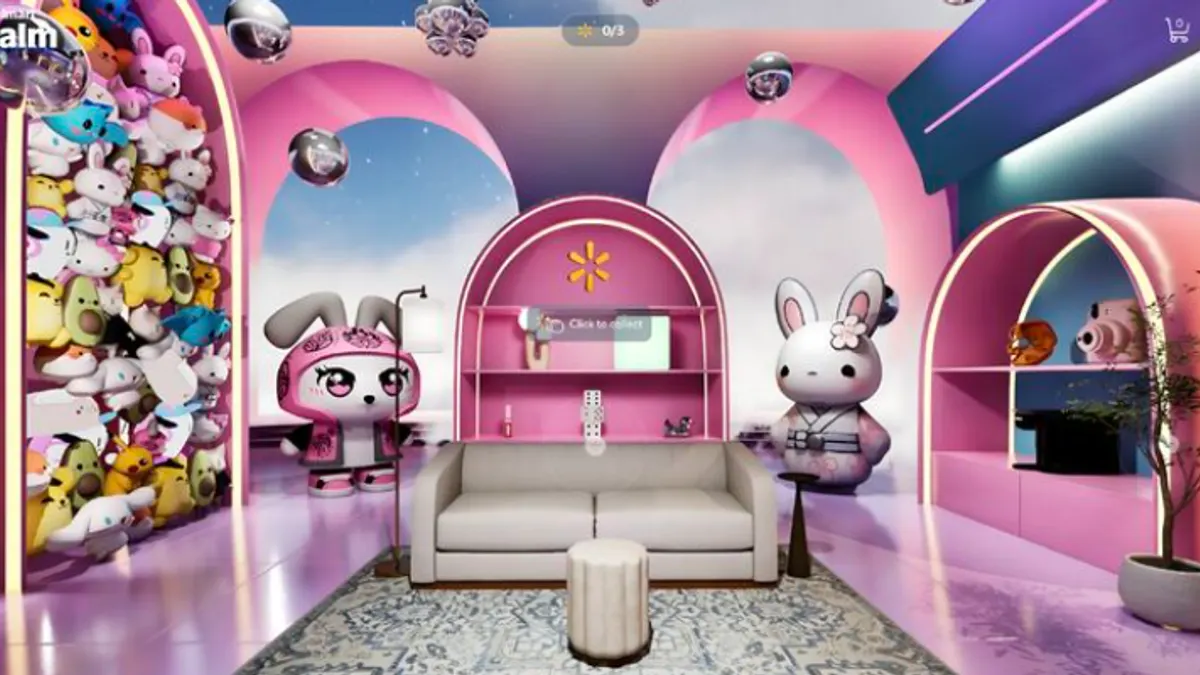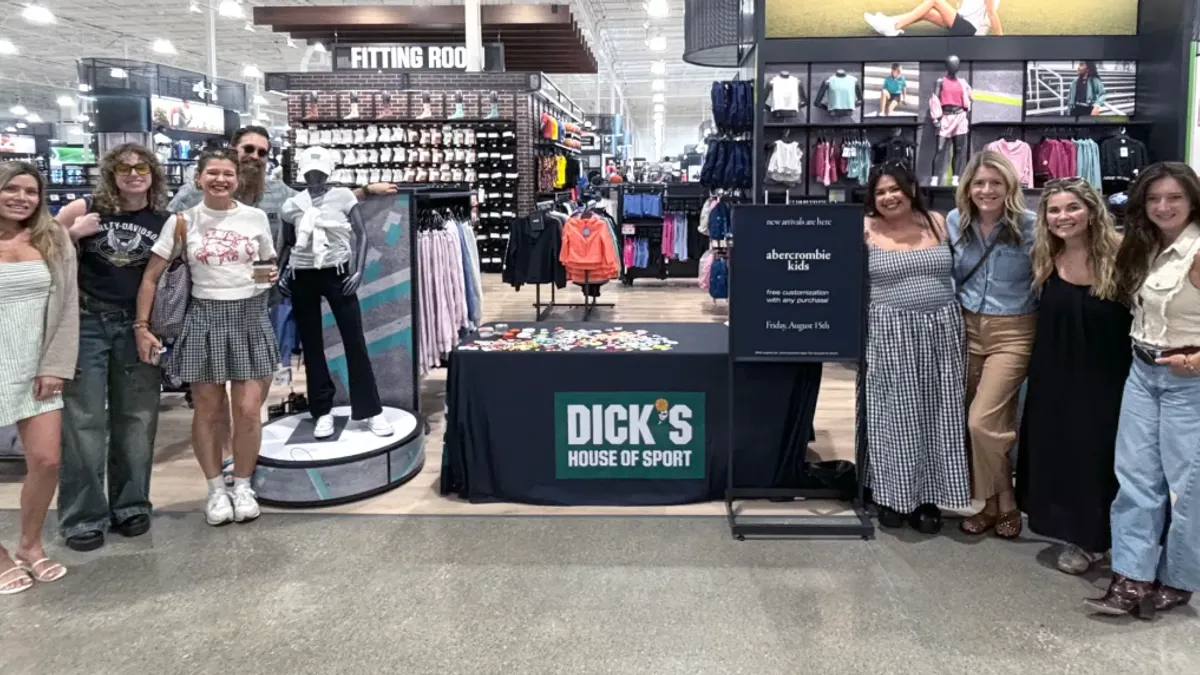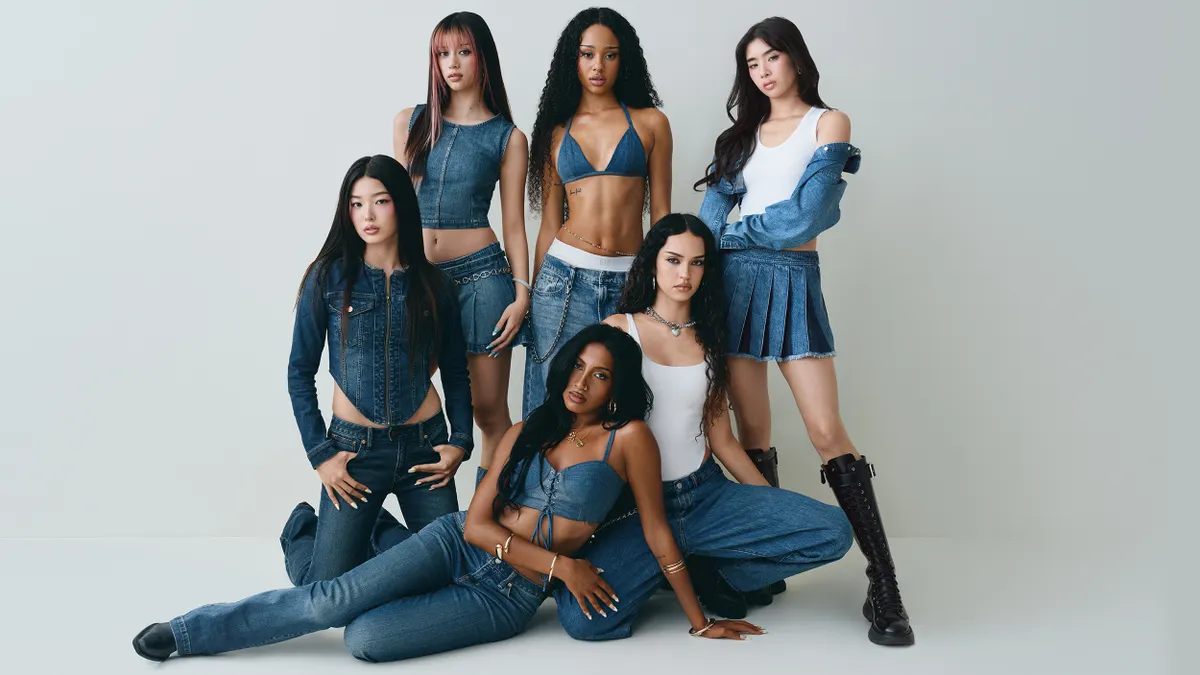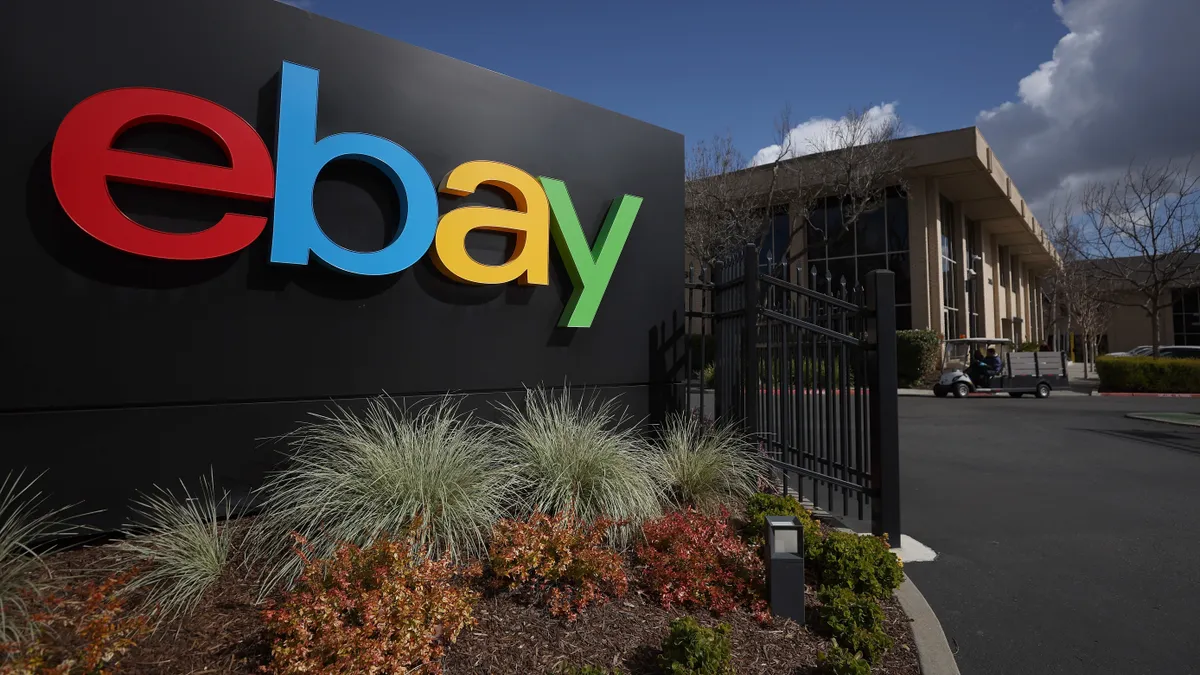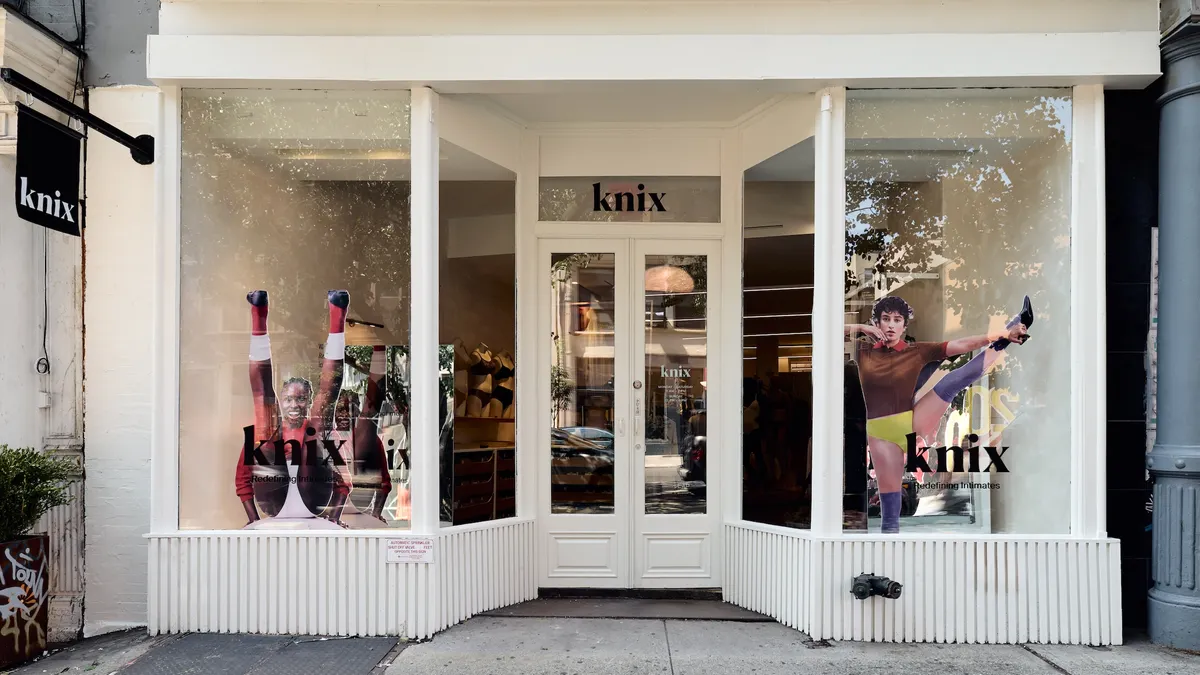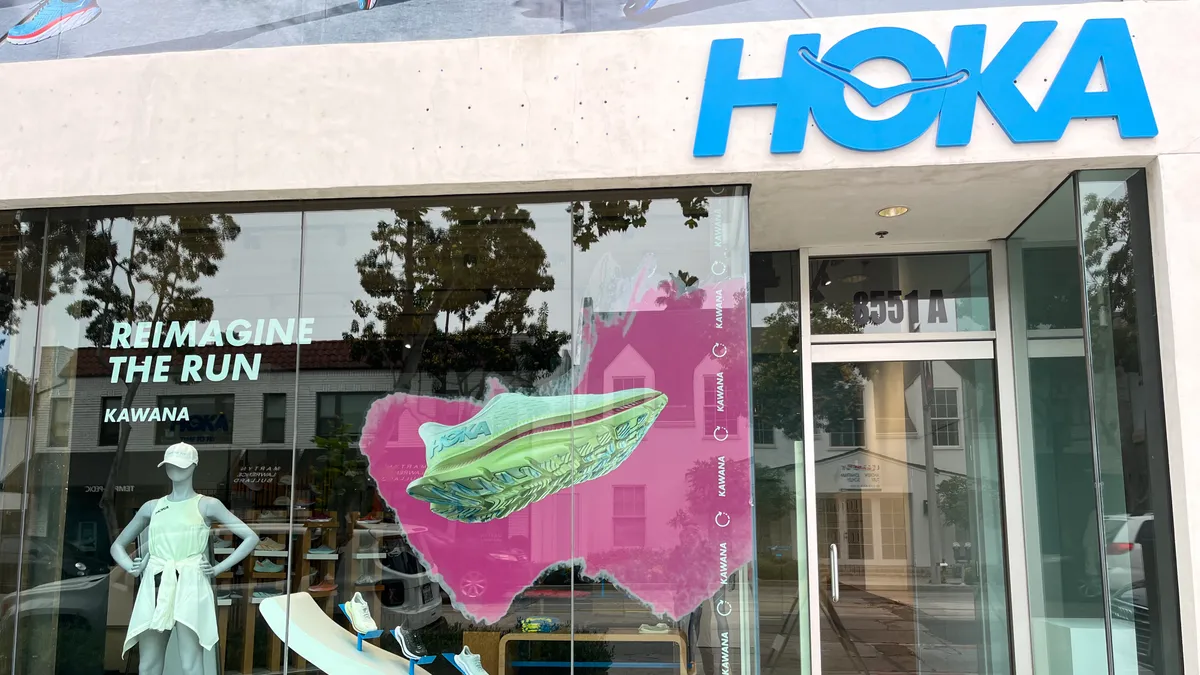Forget Christmas for a minute. It's Halloween.
Pumpkins have been gutted and carved, spider webs are littering the front lawns of every neighborhood and kids are gearing up for that one day of the year where it's okay to take candy from strangers. Halloween is practically upon us — and whether you're planning for next year or cramming in some last-minute marketing, there's much to be learned from this year's celebration.
While Black Friday is stuck between accusations that it's declining in value and claims that it's about to be bigger than ever, Halloween is on the rise. Nearly three quarters (72%) of shoppers plan on celebrating Halloween, according to a study by the National Retail Federation and spending for the holiday is expected to reach $9.1 billion — an 8.3% increase from last year's $8.4 billion.
Part of that can be attributed to the growth in the adult Halloween market, Katherine Cullen, director of consumer research at the NRF, told Retail Dive, noting that older shoppers are "really driving the holiday" and that there is still plenty of opportunity for retailers to get involved in this spooky time of year.
The rise of the seasonal section
Stores shift with the seasons. Whether that means changing the store's visuals, teasing the upcoming season at the front entrance or using other sensory cues, retailers are careful about designing their seasonal section, up until the very last day of October.
"What's so important about the Halloween season is when a consumer walks in the door, that they actually feel the magic of Halloween," Rob Gehring, chief sales officer at Hershey, told Retail Dive, saying that some retailers do this better than others. "You know, they've got pumpkins at the door, there's that smell of pumpkin spice from things coming in from the bakery. It's important to a shopper that they sense right away that it's in the season."
According to Gehring, the seasonal section should be easy for the shopper to locate and navigate and should be a "one-stop shop" of Halloween supplies. To make the most of a given Halloween shopper, having a display that holds candy alone isn't enough. Why? Because consumers are looking for much more than just candy when they walk through the door.
"Costumes, candy, decorations — those are the three biggest areas of spend, but we also see consumer spending on things like greeting cards. It's a holiday where it's kind of touching all aspects of retail and getting everyone involved."

Katherine Cullen
Director of Consumer Research at the National Retail Federation
"Costumes, candy, decorations — those are the three biggest areas of spend," Cullen said, "but we also see consumer spending on things like greeting cards. It's a holiday where it's kind of touching all aspects of retail and getting everyone involved."
Indeed, according to the NRF's data, costumes will account for the most Halloween spend, topping out at $3.4 billion, followed by candy and decorations ($2.7 billion each) and lastly greeting cards ($410 million). With the season just around the corner, retailers can expect last-minute purchases for consumers who haven't had the time to shop yet and they should be ready for that rush.
"Ideally, the retailer will have laid out this one-stop shop area in the seasonal section that has everything to satisfy that mom or dad and what they need to prepare their household for the holiday season," Gehring said, emphasizing that popular brands, especially in the candy department, should anchor the seasonal display. "It could vary by neighborhood, by demographic, by geography, whatever that may be, but whatever it is that the kids don't want — nobody wants to be that house."
For that reason, Gehring expects Reese's and Kit Kat — two of the top Hershey's brands — to do especially well during the Halloween season, as they "resonate" with Halloween for many consumers. That being said, Cullen says Halloween is a more personal holiday and she expects to see retailers engaging with customers in different and engaging ways, especially online.
"It's a holiday that allows for a lot of creativity and self-expression and provides a different way for retailers to target [shoppers] and get them involved," Cullen said. "Particularly for younger consumers, YouTube is increasingly becoming a channel they're turning to for inspiration and it's a place where retailers can have a voice in where consumers shop and getting customers into their door that way."
While getting shoppers in stores is one thing, a study by Salesforce emailed to Retail Dive also found that Halloween has become increasingly important for online retailers, with searches for Halloween-related items increasing 68% since last year and online sales expected to rise 17% year-over-year.
In addition to being a purchase platform, we can also expect to see marketers using those online platforms to reach out to the growing adult market this Halloween.
Hitting the adult market
As adults become increasingly involved in Halloween, a retailer's role goes beyond providing consumers with the products that they need to offering the inspiration for their costumes, parties and other Halloween-related events. According to the NRF, Halloween shoppers are searching in a lot of places for inspiration — but primarily online (35.2%) and in stores (30.3%).
That's not to say that other platforms aren't important. The number of consumers using pop culture (17%) and Instagram (10%) for inspiration saw the largest increase year-over-year, according to the NRF, growing by about 12%. On top of that, 63% of Halloween searches are coming from mobile devices, per Salesforce, up from 56% last year.
"We've noticed retailers from Target to Sephora posting tutorials or DIY guides," Cullen said. "Target is showcasing not just pre-made costumes but also ways to construct looks based on a number of items from the store that [shoppers] can then put together themselves."
In fact, Cullen believes there's a lot of potential for retailers to get involved through the do-it-yourself craze and expects to see more retailers making moves similar to that of Ikea, which jokingly released a guide on how to make the "Vinter Skuldervarmer" — a cape worn by members of the Night's Watch in the popular Game of Thrones series — with just a pair of scissors and one of its rugs.
"Once they check that off, they're going to be dwelling and they're going to look for ideas."

Rob Gehring
Chief Sales Officer at Hershey
Those kinds of DIY costumes are not only popular, but consumers are also increasingly turning to platforms that offer that kind of inspiration online. In particular, Alliance Data found that 65% of millennials scour social media for inspiration, with Pinterest and Facebook ranking consistently high.
Inspirational platforms like Pinterest and Instagram aren't just for show, either — they can have a significant impact on a shopper's purchase decisions. According to L2, image content posts by influencers increase engagement by 17% when compared to non-influencer posts and Instagram influences the purchase decisions of almost 75% of its users, according to Dana Rebecca Designs.
That leaves a lot of room for retailers to swoop in, especially among younger consumers, and engage them both on social media and in stores. While most shoppers will be coming in for something specific, like candy, there's ample time for retailers to grab some extra attention and offer up the impulse buys.
"Once they check that off, they're going to be dwelling and they're going to look for ideas," Gehring said, describing the experience of a shopper in the seasonal section. "They'll have parties around Halloween, they'll have family get togethers and meals. Whatever solutions a retailer can provide to help them in all those facets really helps the shopping experience."
Indeed, adults have a lot of wants on their Halloween wish list beyond just candy — something that retailers can capitalize on in stores. The NRF found that 71% of Halloween celebrants plan to hand out candy, 49% will decorate their home or yard, 48% will wear costumes, 46% will carve a pumpkin, 35% will throw or attend a party, 31% will take their children trick-or-treating, 23% will visit a haunted house and 16% will dress their pets in costumes.
Late shoppers will likely keep to those trends in the final days leading up to Halloween.
Christmas at Halloween?
Consumers begin to think about what Christmas presents to put under the tree in the fall. According to Cullen, the NRF has consistently found that holiday shoppers really only begin researching for Christmas in the October timeframe, but "the bulk of holiday purchasing doesn't really start to happen until November."
Nevertheless, it's important to recognize that some consumers will be ready to look, compile wish lists (online versions of which are becoming increasingly popular) and sometimes even make purchases while Halloween is still upon us, meaning retailers need to be ready to balance their marketing for the two holidays, both online and off.
"Having online wish lists set up, but marketing toward Halloween can help you stay top of mind for consumers as they get ready for holiday, while still helping to push them toward their Halloween purchases," Cullen said.
"It's so valuable for [retailers] to secure that full Halloween trip. If a consumer were to stop in October 25 and not see what they need Halloween-wise and see Christmas — they're going to be quite disappointed."

Rob Gehring
Chief Sales Officer at Hershey
According to Salesforce, the peak of the Halloween shopping season goes from Sept. 14 through Oct. 31, suggesting that even if a retailer wants to be forward-looking for the holidays, they really can't turn their backs on Halloween until the day is put to rest.
"It's so valuable for [retailers] to secure that full Halloween trip," Gehring said, discussing the balance between those seasons. "If a consumer were to stop in October 25 and not see what they need Halloween-wise and see Christmas — they're going to be quite disappointed."
Indeed, at least in the candy department, the last two weeks of Halloween can be some of the most important. Gehring noted that it's in this last-minute timeframe that shoppers are rushing into stores to replace candy that they've taken home and eaten, or else buying more for the trick-or-treaters they're expecting.
"The $25 bag has taken off and it's become a great solution for that time-strapped consumer," Gehring said of one of Hershey's products, recommending that retailers wait until closer to the end of the season to promote items like this.
This year's competition
At a time when every retailer is trying to become a seasonal shopping destination, it can be hard for anyone to stand out — especially when the season crosses so many categories, from convenience stores to mass merchants and grocery stores. The competition is certainly there, but who are the big players and what are retailers doing to differentiate themselves?
Of course Amazon tops this list with Jeff Bezos and his e-commerce juggernaut poised to capture 71% of online Halloween shoppers, according to a study by Bizrates Insights for Internet Retailer. That's followed by Walmart.com (42.9%) and Spirit Halloween (40%).
"We think of costumes and pop-up costume stores and traditional Halloween retailers getting involved this time of year, but we've seen a number of things pointing towards retailers not generally involved becoming engaged in the holiday."

Katherine Cullen
Director of Consumer Research at the National Retail Federation
What Halloween shoppers are searching for varies by demographic. According to a Quantcast study emailed to Retail Dive, 18-24 year-old's searched primarily for costumes, movies, horror-themed events and "generally cheap and easy ways to celebrate," whereas 35-44 year-olds were torn between child-related searches for costumes and crafts and more party-focused searches about alcoholic drinks and older costumes.
That should give retailers a hint of how powerful a tool search can be during the holidays, but retailers will also be competing on other fronts.
"We think of costumes and pop-up costume stores and traditional Halloween retailers getting involved this time of year, but we've seen a number of things pointing towards retailers not generally involved becoming engaged in the holiday," Cullen said, pointing towards the prevalence of DIY costumes as an avenue for non-traditional retailers.
Experimentation across the board can be a good way to draw consumers in during the busy Halloween season and make offerings stand out. Gehring explained that Hershey makes an effort to release new products during busy times of the year, like this Halloween's glow-in-the-dark packaging.
"There's so much store traffic in that time of year that people are looking for experimentation," Gehring said. "They're in an indulgent mood. A little bit of indulgence is that personal reward and while they'll stick to core brands, they love to experiment as well."
Gehring believes retailers should also focus on making Halloween shopping an experience. He recalls watching one consumer walk down an aisle, grab what she needed and then spend a minute gazing at the display, presumably because of how good the presentation was, before buying two more items that weren't on her list.
"When you just make it the traditional, it's just on the shelf, it is what it is, [consumers] may come by and check the box and do what they need to do, but they're going to move on," Gehring said. "They're not going to explore."
This story is part of our ongoing coverage of the 2017 holiday shopping season. You can browse our holiday page and sign up for our holiday newsletter for more stories.








